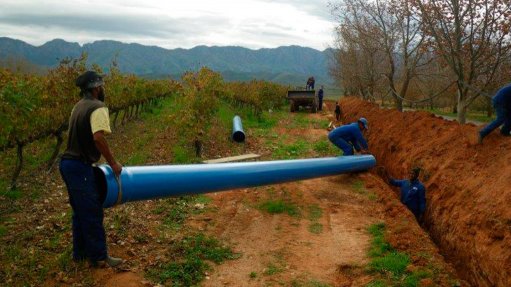
DPI Plastics has developed a ‘how to’ guide on field pressure testing to ensure that the integrity of a pipeline is not compromised.
A field pressure test is used to test the integrity of pipe joints completed on site. This test is covered by the SANS 2001:DP2 – Medium pressure pipelines standard, explains Renier Snyman, technical and product manager at DPI Plastics.
Modern plastic pipes are manufactured under controlled conditions, with hydrostatic pressure testing of pipes and joints to confirm minimum performance requirements. “However, when the pipe is laid on-site, the jointing quality and method is outside the control of the manufacturer,” Snyman highlights. Field pressure testing establishes that the pipeline does not leak. The test pressure is raised above the operating pressure of the pipeline to allow the pipeline to settle under that pressure and to highlight possible leaks that would otherwise only develop after some time under pressure.
According to SANS 2001: DP 2, the test pressure must be 1.5 times the working pressure of the pipeline, up to a maximum of 10 bar. Above 10 bar, the test pressure must be the working pressure of the pipeline, plus 5 bar. This requirement refers to the working pressure of the pipeline, namely the pressure the pipeline will operate under, and not the pressure class of the pipe.
For example, a pipeline with an operating pressure of 16 bar should be tested at 21 bar (16 bar + 5 bar). However, testing is often conducted at 1.5 times operating pressure, regardless if the operating pressure is above 10 bar or not. In this instance, the difference between the correct pressure above and a 1.5 times operating pressure (24 Bar) is 3 bar.
In addition, the test pressure must be between 1.25 times and 1.5 times the operating pressure at any point in the pipeline. This requirement makes allowance for variation in the test pressure. Due to differences in static head in the test section, it allows the test pressure to vary between 1.25 and 1.5 times the operating pressure at any point along the test section.